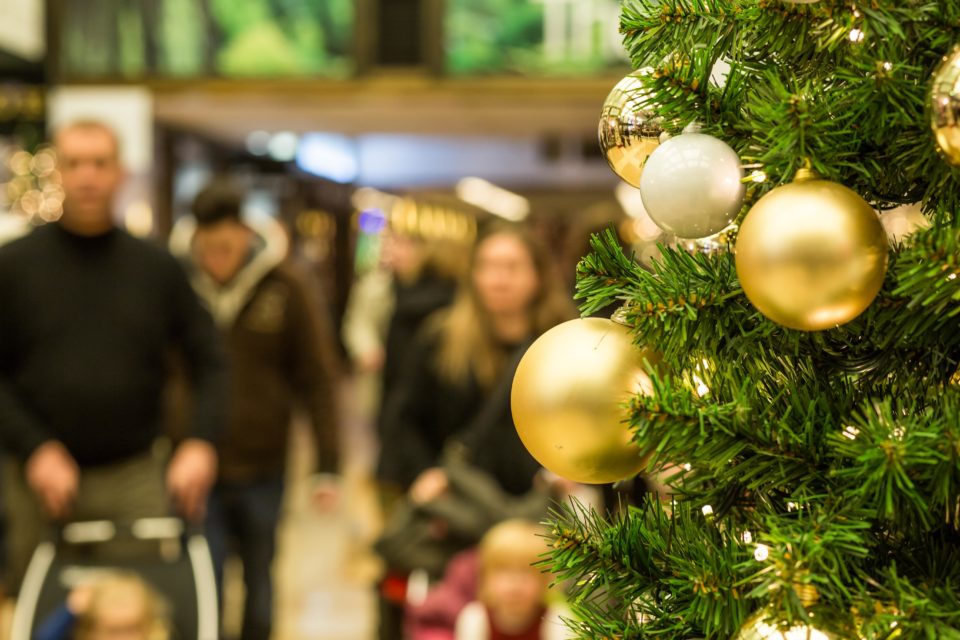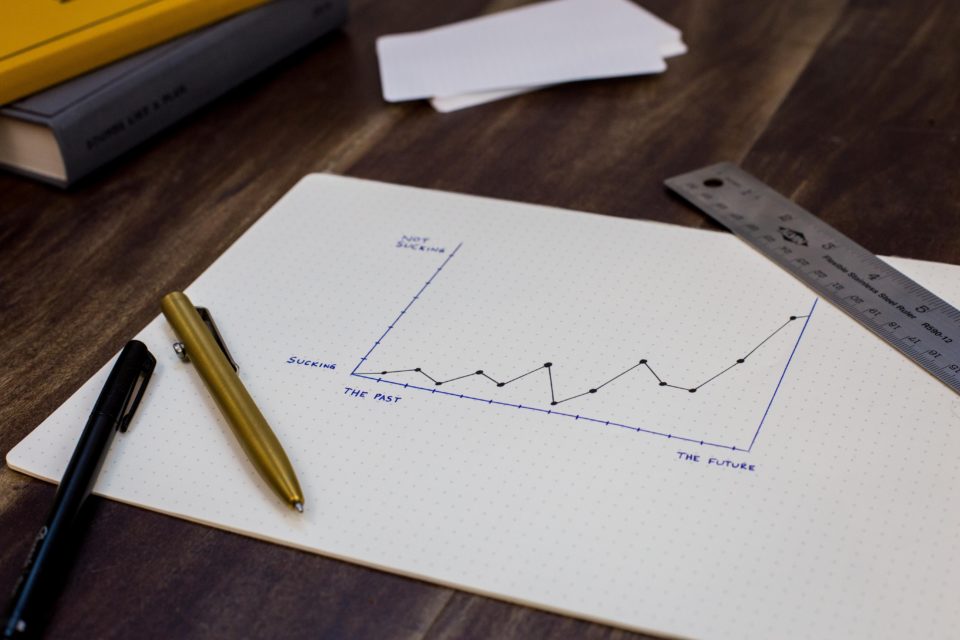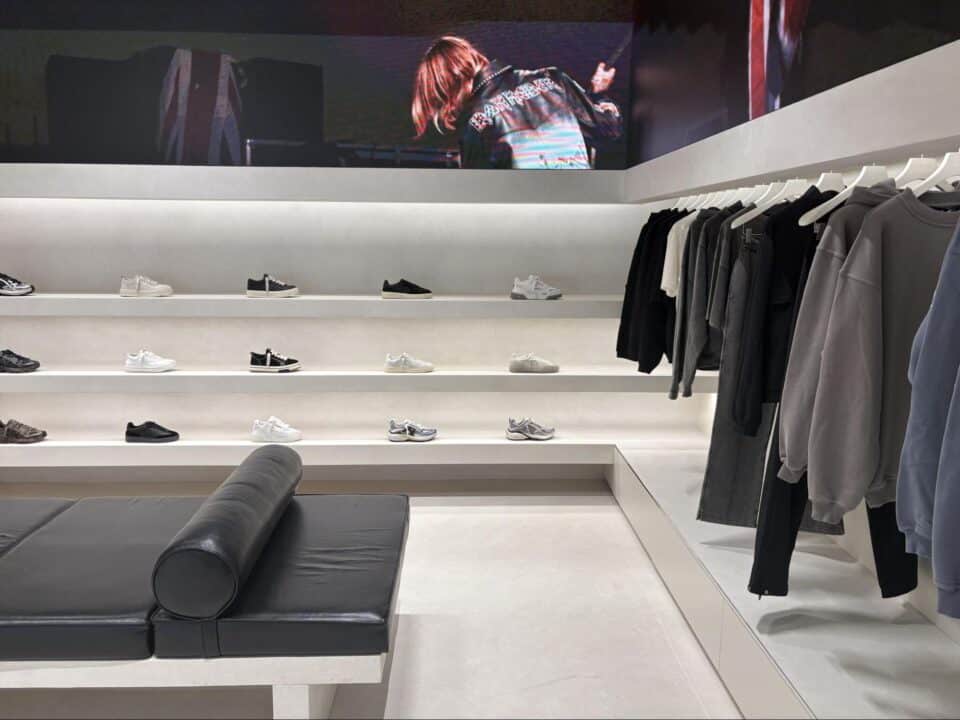The 50 Best Retail Concepts of 2024
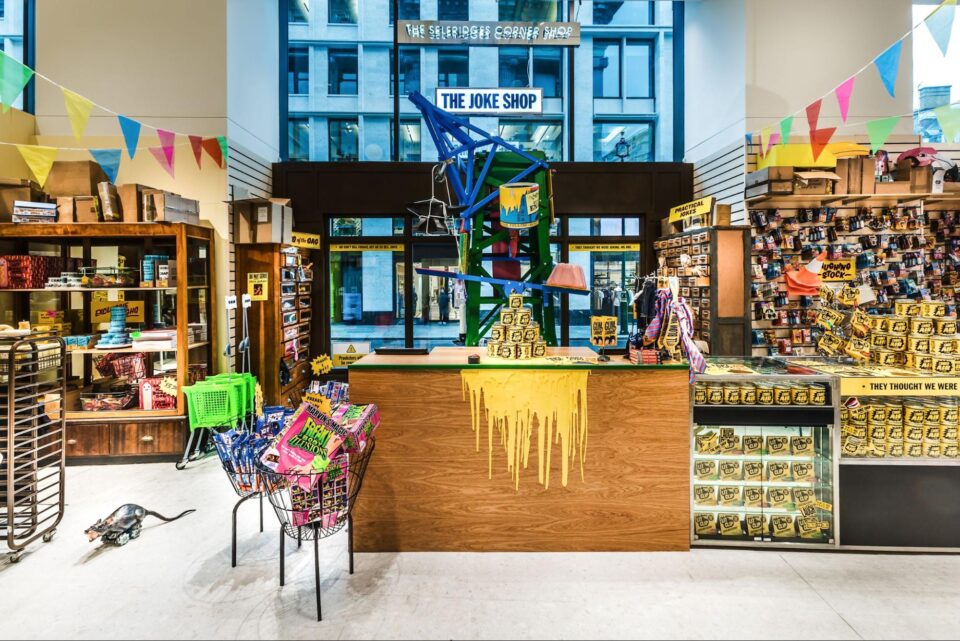
2024 saw an amazing range of innovative new retail ideas, incorporating new advances in generative AI and digital technology, as well as trends in sustainability, community building and services.
We saw more standalone stores and smaller concept stores created to either serve customers in city locations, or focus on a brand’s services. Immersive displays also grew in popularity to create more engaging and entertaining spaces, as well as allowing collaborations with artists and the use of user-generated content (UGC).
Collaborations have been key too, with brands partnering with technology companies, social media, or other brands that share their ethos, to bring a range of products and experiences to customers.
We have seen physical brands make forays into digital spaces, such as games and virtual reality, but also brands that made their name online create physical stores and pop–ups.
Here are 50 of the best retail concepts that we found in 2024.
Physical Retail
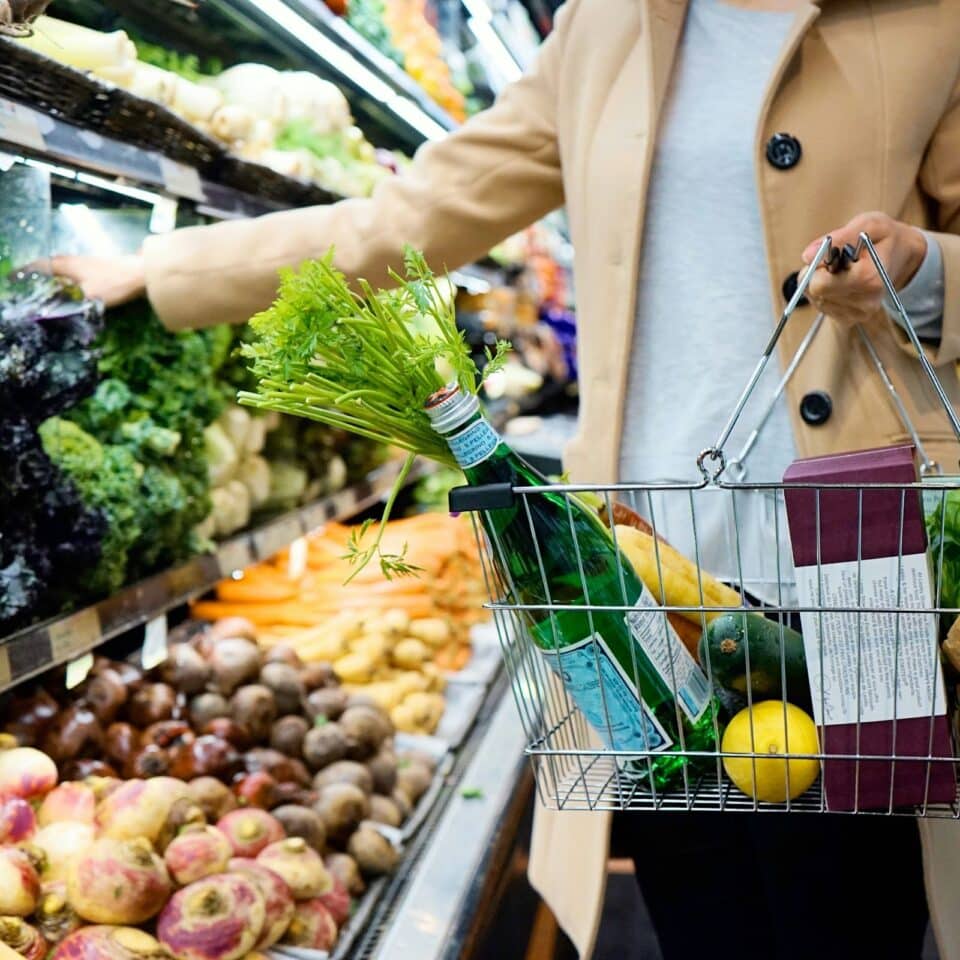
1. Trader Joe’s Pronto, New York City, US
Trader Joe’s, the food retailer, launched an extended store in New York City, aimed at customers on the go. The store offers a range of quick to cook meals and essential supplies.
Customers can find pre-made ready to eat products, ready meals, chilled items and other convenience foods. What’s interesting is that this is a one-off concept, specifically created in response to the local area.
By offering a smaller range of items and quick payment options, this space caters to tourists and locals looking for something on the fly. This leaves the main Trader’s Joe nearby for shoppers who want to do a full weekly shop.
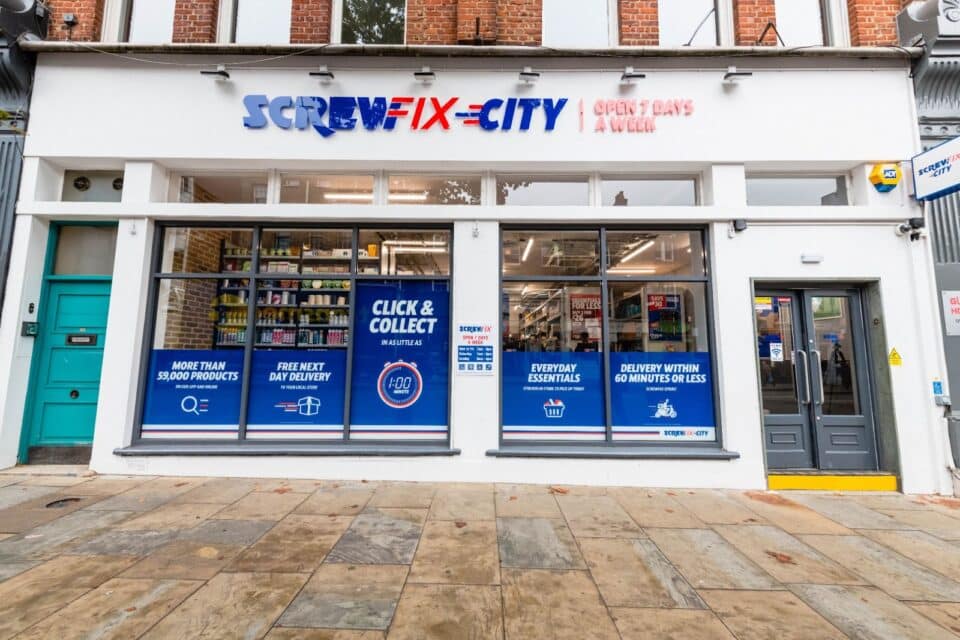
Image credit – Screwfix
2. Screwfix City, London, UK
Another brand that created a smaller store concept aimed at the city is trade tool company Screwfix.
The new smaller store concept started in Camden, Islington and Dulwich, though the company is rolling out more stores including outside of London. The stores are designed to be helpful for tradespeople, who may struggle with traffic, parking and needing emergency parts.
Screwfix City stores carry 3,000 items available immediately with click and collect, and further items available for next day collection. Another helpful service from the brand is Screwfix Sprint, which promises item delivery in under an hour.
3. M&S clothing only store, London, UK
Marks & Spencer launched a standalone store in 2024, its first to offer only clothing in its 140 years on the high street.
The company chose Battersea Power Station as its test location, where it already has a food shop. The new standalone outlet carries a curated range of fashion and beauty, building on its growing popularity. The brand has collaborated with a number of celebrities, including Sienna Miller, to change the perception of its clothing range.
The new clothing store carries premium items such as cashmere, lingerie and select pieces from the Autograph label. M&S plans to roll out further fashion-focused stores using learnings from the Battersea Power Station store.
4. Workshop by Baskin-Robbins, Seoul, South Korea
Generative AI ChatGPT had an interesting inclusion in a new Baskin-Robbins store in Seoul.
The store is designed as a workshop space, with a lab setting theme, including the introduction of a “Doctor” who gives tours. Customers are able to try experimental new flavours that have not been tested or released anywhere else, allowing the brand to see which flavours are most popular, and provide more personalised recommendations.
ChatGPT was used to help generate recipe ideas with data from Happy Point, the Baskin-Robbins reward scheme. New flavours as a result of this data and collaboration include Green Tea Earl Grey and Wasabi.
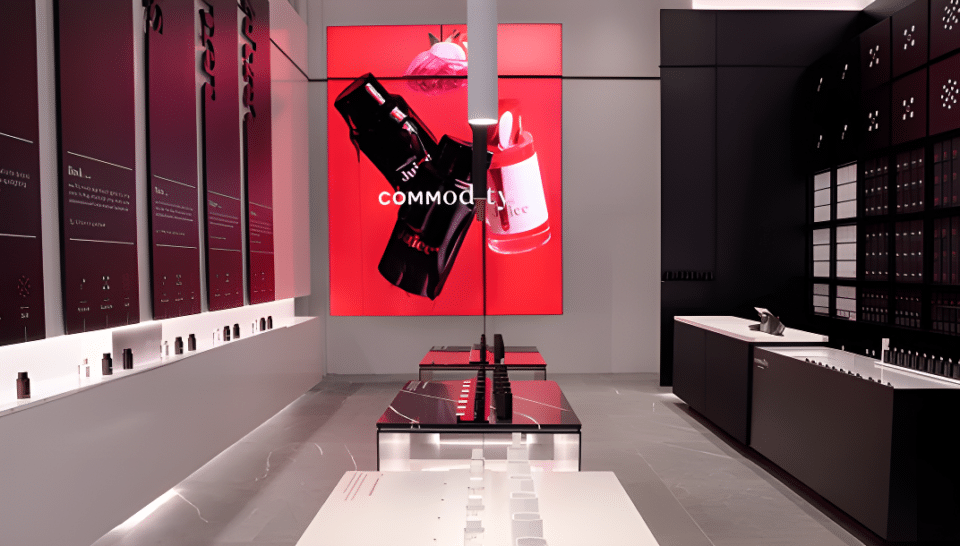
Image credit – Commodity
5. Commodity, NYC, US
Many retailers start online and then launch physical stores, such as digital perfume brand Commodity.
It chose a location near other perfume and department stores to demonstrate its legitimacy among existing retailers, and supplement distribution strategies it already has in place with brands like Sephora.
The store has a museum feel to encourage customers to explore the Commodity collection, with signs and display cabinets. Popular scents that have previously sold out are also displayed in a dedicated space for shoppers to purchase.
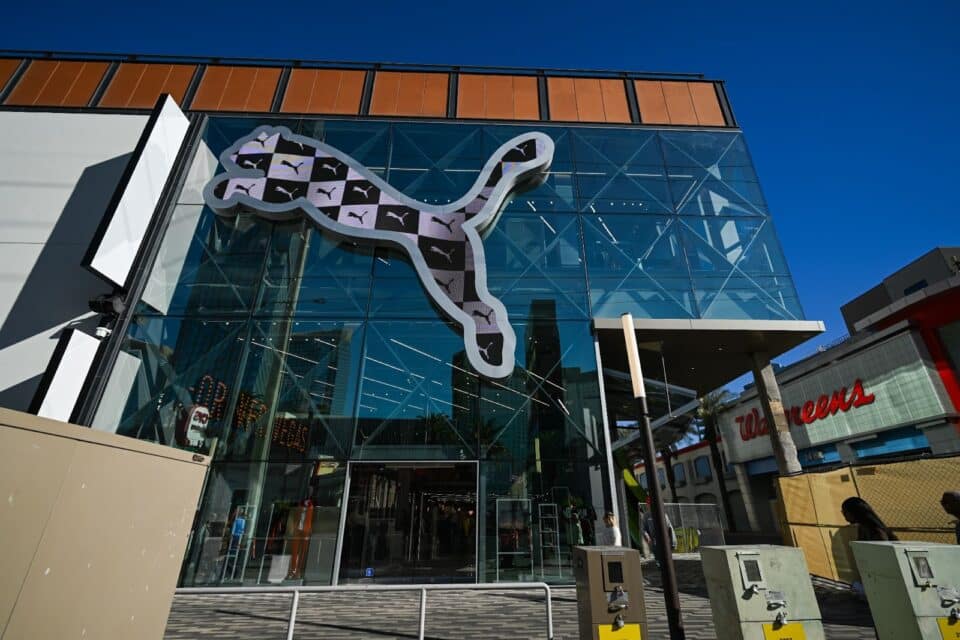
Image credit – PUMA
6. PUMA, Las Vegas, US
Many retailers look to the location of a store for inspiration, and with the many attractions of a place like Las Vegas, brands have to find unique and entertaining ideas.
Sports brand PUMA packed its flagship store on the Las Vegas Strip with interactive elements to encourage customers to linger longer in-store. These include an F1 racing simulator of professional grade quality that allows customers to do a virtual race through Las Vegas and an interactive arcade with running, golf and football games.
Another fun interactive element reflecting the location is a Vegas shop complete with a slot machine style lever to win prizes, and Las Vegas PUMA merchandise.
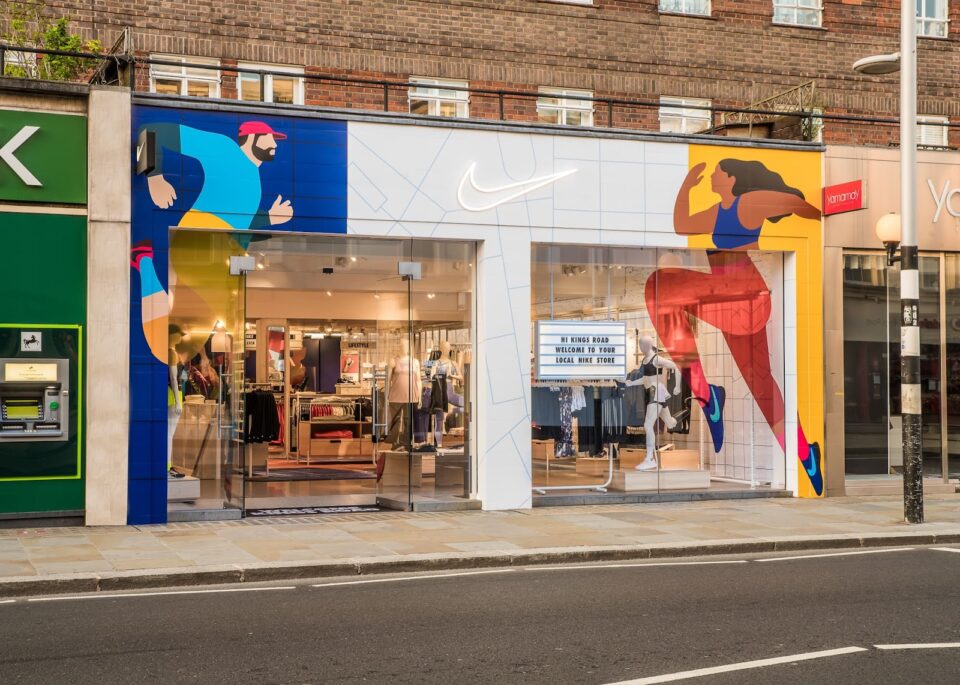
Image credit – Nike
7. Nike King’s Road, London, UK
A number of campaigns have noted that women tend to engage in less athletic activity than men. It’s against this backdrop that Nike launched a women’s only store in London that included art designs from Isamaya Ffrench.
The store features services and elements to support women with exercise, such as bra fitting and hemming trousers, but also the ability to change lighting in the fitting rooms.
Finally, customers are able to take part in training and running clubs as part of Nike+, use click and collect on any products, and browse the Nike womenswear collection.
8. Outlandish, Santa Monica, California
Digital platform Outlandish, a TikTok partner, has launched a physical flagship, to offer products and live streaming.
The space contains a number of stalls that creators and companies can rent and decorate with their own branding. They can then do live shopping events directly from the flagship, and interact with customers in person and online via Outlandish.
Customers can find and shop the products that were promoted on a separate floor in the store. The items and brands will change frequently, with live streaming facilities available to rent for just an hour.
Outlandish will also connect with the creator community, and run classes aimed at helping them with marketing and live shopping.
Digital Retail
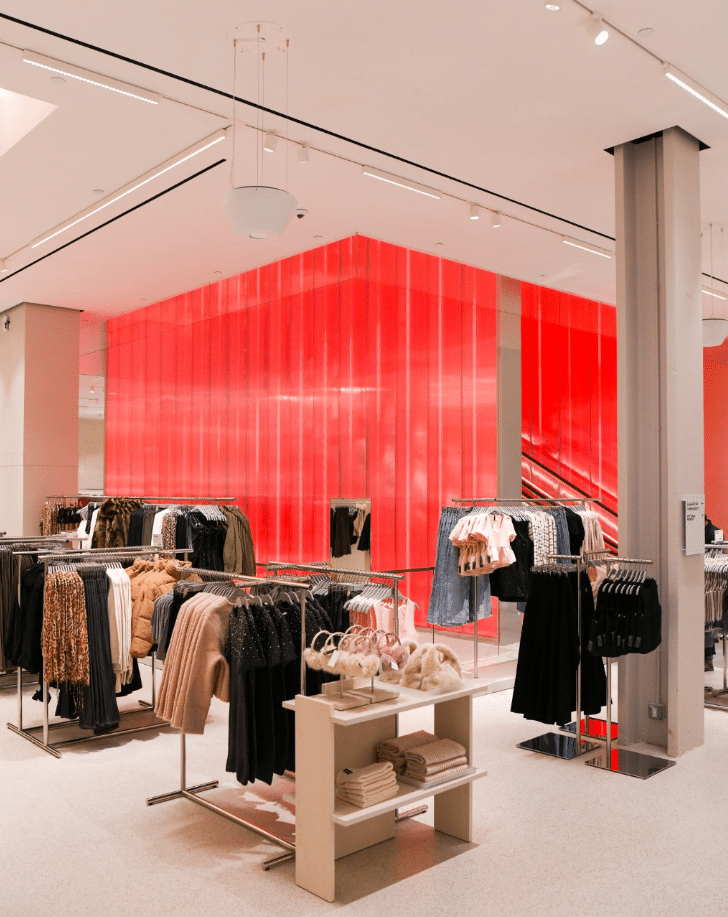
Image credit – H&M
9. H&M Times Square, NYC, US
Retailer H&M refurbished its New York flagship to incorporate a number of digital elements.
This includes immersive changing rooms that have a number of settings for customers. The rooms contain LED screens across all walls and ceilings that are customisable, to create different backdrops, themes and music, to match the shopper’s style and mood. The interactive mirror allows customers to explore trending products and try on new items.
These interactive elements provide an opportunity for customers to create content, which has been a key method for stores to attract new customers via social media word of mouth.
10. EsselungaLab, Milan, Italy
Supermarkets are on the forefront of innovative retail to try and reduce friction in purchasing. Esselunga launched a new Grab & Go store and café in a retail lab, supported by technology from Trigo, Diebold Nixdorf and Dexai Robotics.
Unlike other scanless stores, customers do not have to download or use an app to shop. The customer baskets are monitored via a combination of cameras and weight sensors. The cameras use vision recognition technology to create virtual baskets and the weight sensors can recognise products being picked up and put back, allowing the virtual baskets to accurately represent what customers are carrying in real life.
At the café, customers can watch a robot prepare a salad. The robot is powered with sensors and recognition technology to identify the food required, and can make 25 bowls of salad every hour. Staff are notified via app if the robot needs maintenance or cleaning and can also adjust the recipes depending on the stock they have.
11. IM TYPE, Seoul, South Korea
AI is making its way into the beauty world, particularly in South Korea, which is already renowned for its beauty innovations.
Beauty platform IM TYPE launched its first physical space featuring AI kiosks. The platform is powered using data from millions of customer skin records, allowing it to provide personalised recommendations.
Customers who use the AI kiosk have their skin matched to one of 90 different types and receive recommendations for their beauty regimen. They can then select from cosmetics and products that match their skin type.
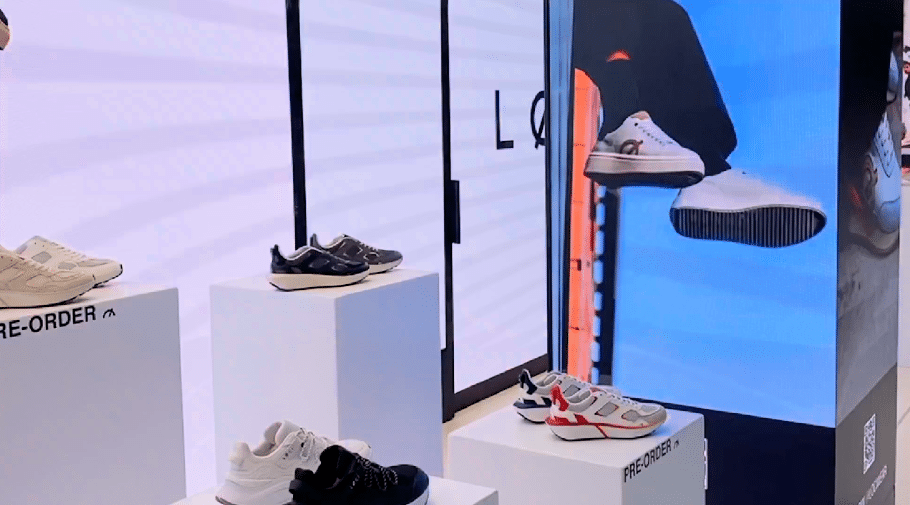
Image credit – LØCI
12. Future Stores, London, UK
Future Stores is a new space to showcase brands using technology and immersive activations.
LØCI, a fashion brand that makes vegan footwear, was one of the retailers using the new space. The brand hired Laolu Senbanjo, an artist, to create artwork for the expansive display screens. Snapchat was also involved in supplying its augmented reality (AR) technology for virtually trying on products. This included some bespoke lenses along with LØCI.
The store also allows brands to collect a range of data from customers, such as how many walk past or come into the store, how long they spend browsing and their navigation.
13. Tesco Clubcard Challenges
Many brands are turning to apps to help collect better information on customers and use this to create personalised rewards and offers.
For grocery giant Tesco, this includes incorporating AI into its Clubcard loyalty scheme via new Clubcard Challenges.
Customers are given 20 personalised challenges and can choose 10 of them to complete over six weeks. If they do complete them, they can receive up to £50 in Clubcard points. The challenges include tasks such as buying a certain amount of plant-based foods, or from a particular range.
Through Clubcard Challenges, Tesco is able to use customer data to nudge shoppers towards different buying behaviours or to up their spend in a particular category in order to reach a reward.
14. Bershka and FFFACE.ME
Augmented reality and TikTok were used by Spanish fashion brand Bershka in collaboration with FFFACE.ME to create a special clothing collection.
They created five physical clothing items that had digital elements from the TikTok Effect House built into them. The design of the items also came from TikTok trending fashion ideas. Each item had a QR code on it, which when scanned activated augmented reality technology.
The augmented reality would make the clothing “come to life” allowing wearers to create TikTok content from their fashion. This was also thought to be the world’s first TikTok collection.
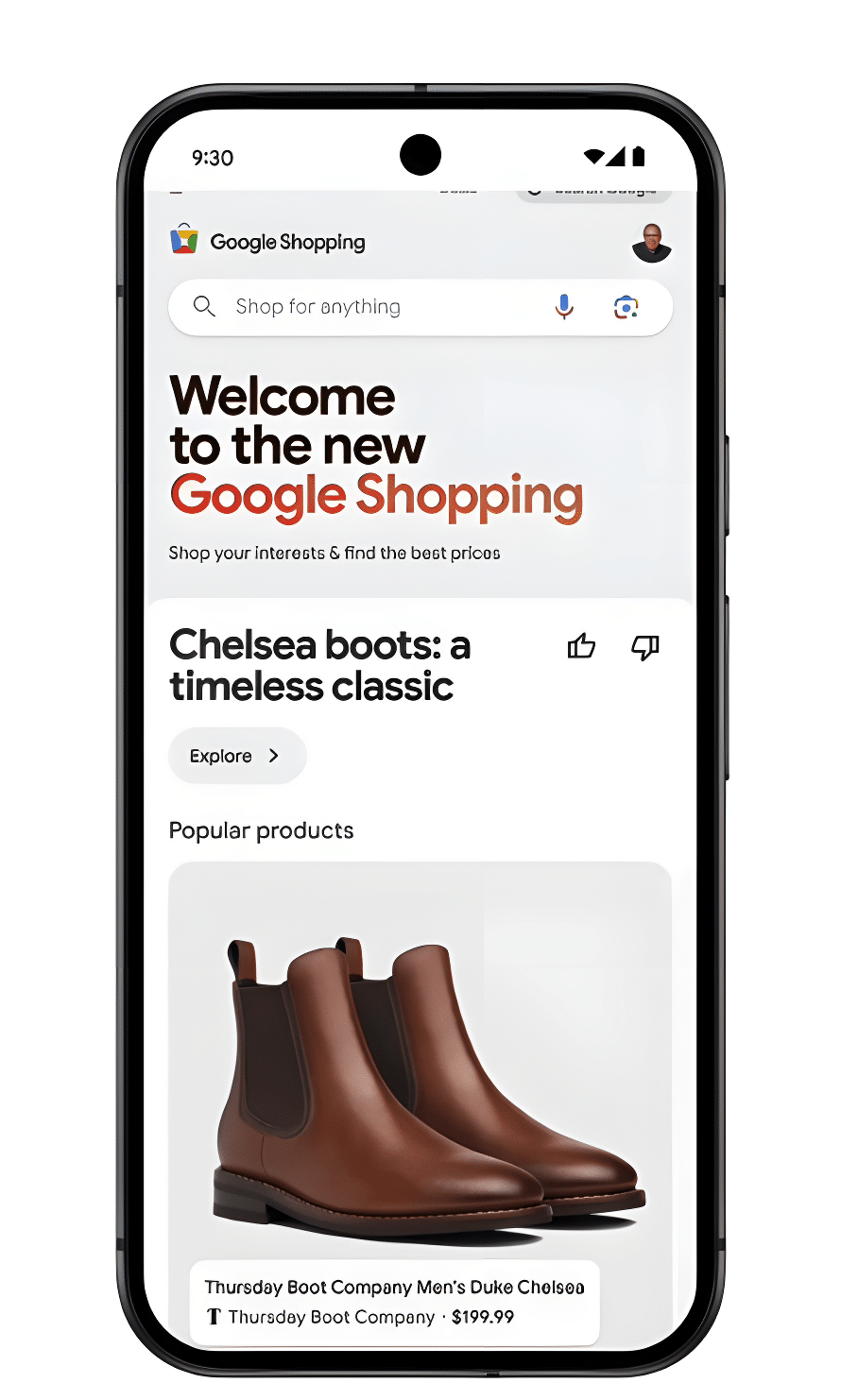
Image credit – Google
15. Google Shopping
The continuing interest in AI has led Google to upgrade Google Shopping with new features for personalisation and recommendations.
Reminiscent of the “For You” feeds on social media, the new Google Shopping feed uses search history and YouTube watch history to recommend products. Users can see products they have recently searched on Google Shopping, and then scroll down for videos and other products.
Google is also using AI-generated briefs to help customers make better buying decisions. This includes explaining the most important things a customer should know about the product they’re searching for.
16. Amazon Rufus
Amazon is also looking at ways to make its shopping experience more personalised and has created a new shopping assistant called Rufus (named after an employee’s Welsh corgi).
Rufus has been trained on Amazon’s products, but also information about products from the internet. Currently only available on the Amazon mobile app, the shopping assistant can provide information across the customer shopping journey.
This includes questions that a customer may make at the beginning, such as asking for more information on clean beauty products. Once customers have found some items, Rufus can also answer comparison questions to help them make a decision, as well as provide responses to questions about the products themselves.
17. Walmart & Roblox
If you thought the Metaverse had gone quiet, Walmart and Roblox’s collaboration might change your mind.
Walmart is the first company to sell physical items on Roblox, via its Walmart Discovered experience. The brand has partnered with a number of creators Sarabxlla, Junozy and MD17 to select the items available. The partnership will allow Roblox to understand the desire for purchasing physical items via its platform.
Customers can receive both a physical item and a digital version that they can use in Walmart Discovered. They are also given further personalisation features, such as customising their Walmart shopping cart, and displaying their favourite products.
18. Tesco Digital Product Passport trial
There are a number of regulations coming in via the European Union designed to make retailers and producers more sustainable. One that impacts retailers is the Ecodesign for Sustainable Products Regulation (ESPR), which requires more transparency about supply chains.
Ahead of this, Tesco has collaborated with Fabacus, a digital licensing company, to develop a Digital Product Passport (DPP) for its F&F clothing.
Product labels will now have a QR code which can be scanned to provide more detailed information to the customer about how the garment has been created and produced.
19. KFC Play Braam, South Africa
It is important for brands to ensure they are connecting with their target market in the right way. KFC in South Africa launched its new store to connect with young people and ensure that they had a wider experience than just wings.
The store has a display screen with Spotify for young consumers to choose from playlists or play their own. The brand has also added games using VR, where customers can earn vouchers by playing against each other to earn points.
The brand has also introduced clothing designed by Imprint ZA and Mzukisi Mbane which visitors can purchase in-store.
Finally, KFC is looking for feedback on its new bespoke menu, which it describes as test and learn. It introduces new items, such as cola dunked wings, to see how popular they are. If the customers love the item, it will get introduced to other stores. If they do not like it, then KFC will remove it from the menu.
Sustainable Retail
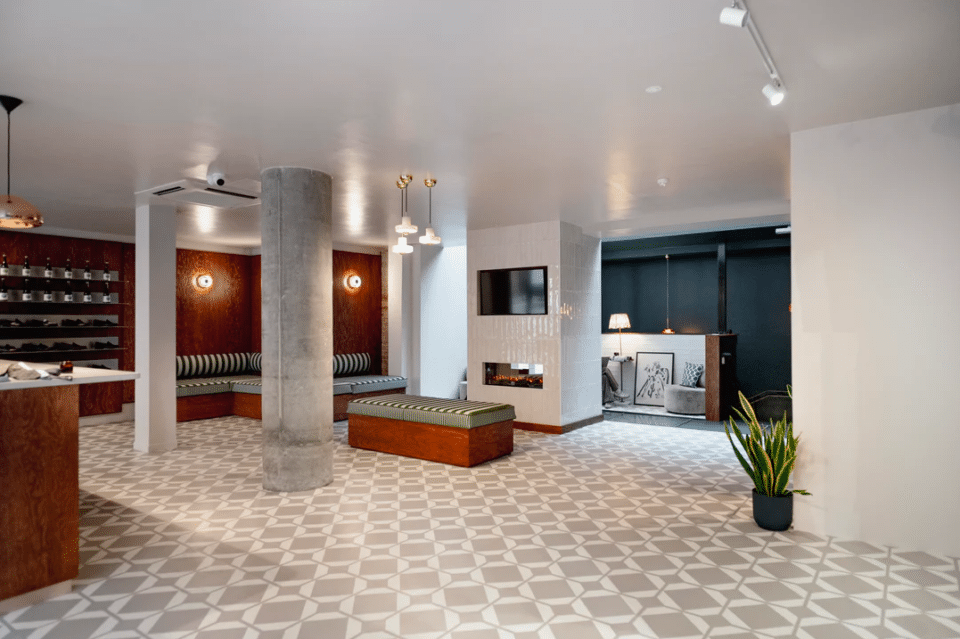
Image credit – Batch LDN
20. Batch LDN, London, UK
Suit brand Batch LDN launched a new store in Covent Garden, with the ethos of sustainable and slow fashion initially aimed at men, but now expanded to women too.
All Batch LDN items are made-to-order which helps to prevent some of the waste common to the fashion industry. However, it is the more affordable price which may be the draw for some customers. The process and the longer wait time for items means that the brand can charge less than other tailors, while still offering luxury fabrics.
The latest store is unofficially known as The Batch Members Club and the brand has partnered with other labels such as Hyperion, Bobbi Beck and Tom Dixon. The store has a café offering sustainable coffee from Bailies Roastery and a space to relax. There are also speakers available to host DJs, and the brand hopes to offer a broad range of events at the store.
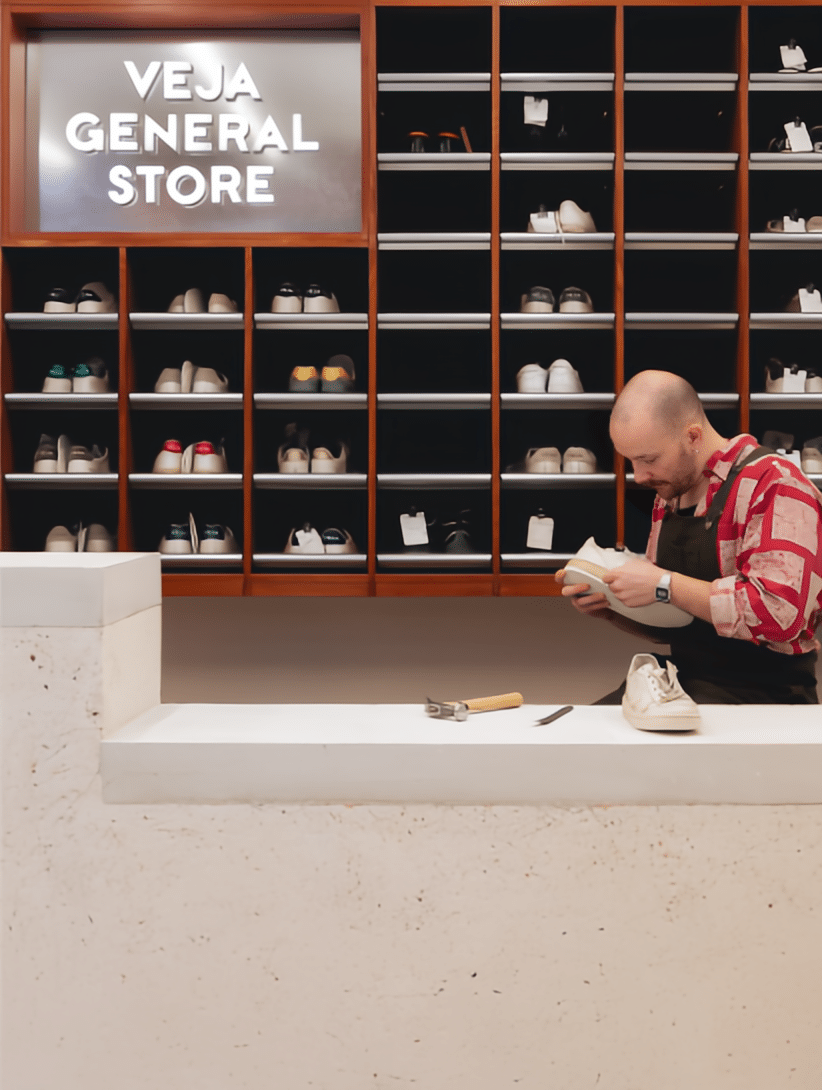
Image credit – Veja
21. Veja General Store, Paris, France
Many stores are focusing on repair as part of their sustainability commitments, and this includes Veja, which launched a new store in France using this concept.
An area of the space, called the General Store, offers a range of services to refurbish and restore clothing and shoes, from any brand, not just Veja products. This includes cobbling and repair services.
The store has also partnered with other sustainable brands such as Public Supply and Snow Peak to offer a range of books, cleaning products, furniture and accessories.
22. Arc’teryx, NYC, US
Outdoor brands, with their focus on practicality and durability, have also been quick to incorporate sustainability into their products.
Arc’teryx launched a large flagship store this year to include the ReBIRD Service Centre. Customers can extend the life of their clothing and other products, with repairs, zipper replacements, waterproofing, repanelling and washing.
Brands are also aware that purchasing second hand items has become popular, particularly amongst younger generations. Retailers offering their own selection of pre-used or refurbished items can appeal to customers by providing a guarantee of quality and authenticity that they may not obtain from online marketplaces, which Arc’teryx has done with its ReGEAR collection.
23. Detoure, LA, US
Reselling has become such a large share of the market that online resale brands have been able to launch physical stores. Detoure, which resells fashion items, ran several successful pop-ups before launching its first bricks-and-mortar space.
Detoure partners with influencers who are selling pre-loved items, using a concept called the Closet Drop. This allows influencers to create their own “closet” page with all items for sale, which they can then share with their followers. Previous pop-up events have gone viral with 100s of shoppers turning up to purchase items.
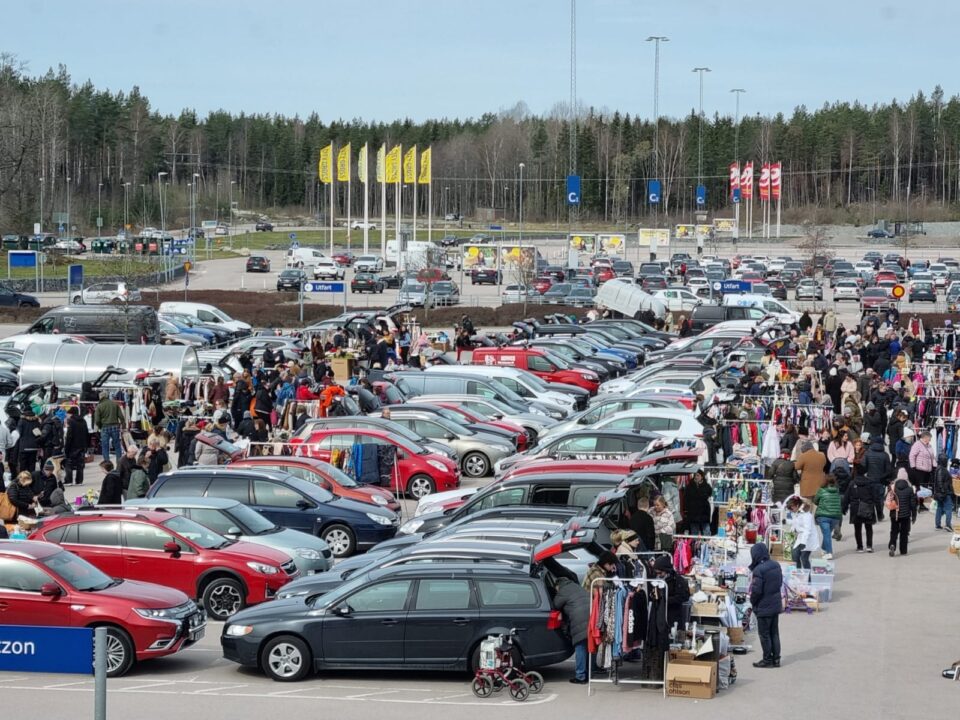
Image credit – IKEA
24. IKEA Flea markets, Europe
Another brand recognising the appeal of the second hand market is Ingka Group, the largest IKEA franchisee.
The company launched “Keep good things going” in 2023 to help educate customers on how to look after their IKEA products and donate them when no longer needed, via services at IKEA stores. This initiative and others are part of a wider transition to circular and sustainable business practices.
It recognises that flea markets are a great way to sell on items that are no longer needed and has introduced them across some of the stores in Europe. The first was IKEA Retail Sweden, which held a number of flea markets in its car parks across April 2024. The flea market concept was then rolled out to Belgium, France and South East Europe.
Customers are able to bring any products to sell at the flea markets, not just IKEA products. The company also used the registration fees to benefit its charitable programmes and other local non-profits.
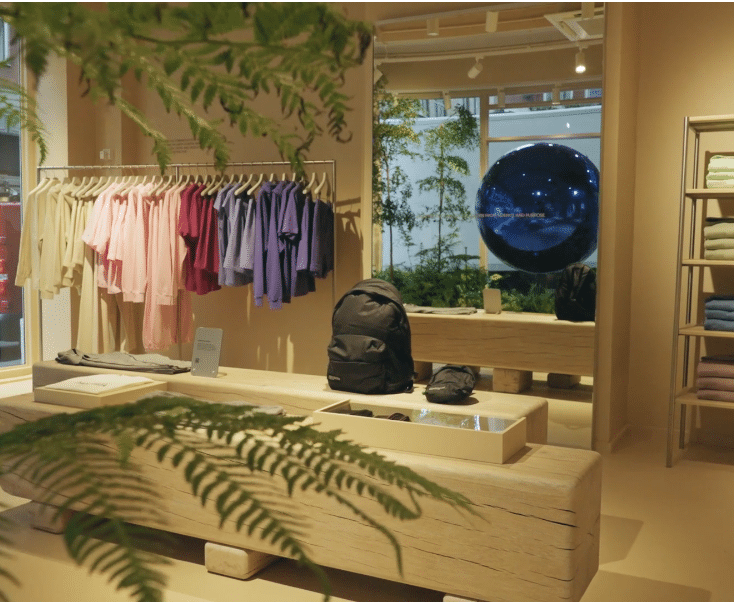
Image credit – Pangaia
25. Pangaia, London, UK
Some brands are looking to develop better and more sustainable materials for clothing. One such brand is Pangaia, who describes itself as a material science brand.
The brand found popularity by offering genderless clothing, with sustainability becoming more popular amongst younger generations. The new store aims to educate consumers about circular practices and nature. There is a sphere that represents Earth and plants specially chosen for the store have been planted.
The brand is also collaborating and spotlighting other sustainable brands, including zero waste beauty brand big. Beauty, and cacao and supplements brand Ancient Brave.
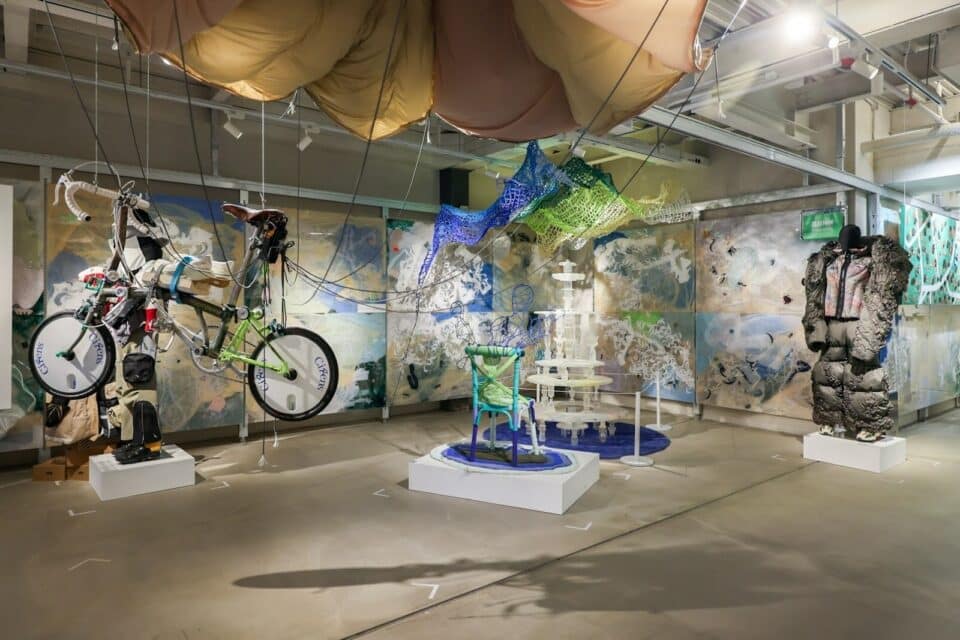
Image credit – Anta
26. Anta Zero, Shanghai, China
National days and other events can provide an opportunity for stores to launch with a particular message in mind. Anta, a Chinese sports brand, launched its sustainability store on Earth Day, to educate consumers about sustainability.
The store used sustainable construction methods to reduce emissions and used recycled materials like fabric scraps. Recycled materials were also used to create special artworks, such as Earth Hour. This artwork will change and grow over time to demonstrate the power of nature.
Customers visiting the store were able to take part in Remake workshops, which used recycled materials to upcycle t-shirts. They could also purchase the Anta Air Mecha, a carbon neutral jacket.
27. Uniqlo Furugi Project, Fukuoka, Japan
The sustainability trend is not just limited to specialist brands, but also major retailers, such as Uniqlo.
It opened a sustainability-focused pop-up over the spring and summer, where customers could only purchase used items. These included a range of affordable second-hand products that were only lightly worn, as well as a range of specially upcycled products that were dyed and washed to look vintage.
Restoration services were also available in the store for customers bringing in their old Uniqlo items. The services available included simple repair services and more extensive reworking of items to create new ones. A range of embroidery was also available, including Japanese sashiko.
28. Unilever flower waste to fragrance
Consumer goods brand Unilever is trialling a new way to extract fragrances, in a bid to find more sustainable ingredients for its products.
The brand has partnered with a seller of plants and flowers, Bridge Farm Group, and scientists from University of Nottingham. The trial will use unsold flowers, such as roses and marigolds, with a new extraction process. The scientists have developed a faster and more energy efficient method for collecting essential oils from the flowers.
If the trial proves successful and is scalable, the brand will use the compounds in its beauty and cleaning products. It will also look at how other materials could be extracted.
Pop-ups
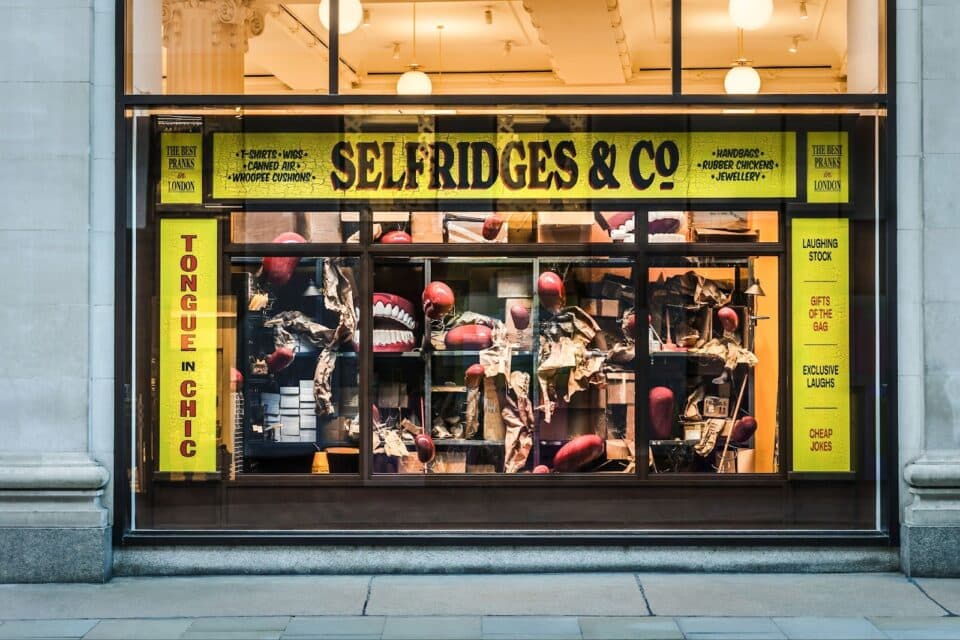
Image credit – Selfridges. Shot by Tim Charles.
29. Selfridges Corner Shop (Joke Shop), London, UK
Iconic British department store Selfridges launched a joke shop which was open until 1 April, demonstrating an understanding of the cultural importance of the independent joke shop.
The space allowed customers to enjoy the history of British joke shops, as well as purchase products and showcase designers and artists. Selfridges drew on its connections with designers by bringing in Anya Hindmarch, Judith Leiber and Aaron Esh, amongst others, to curate products. Items started at the price of 99p to ensure the space was affordable to everyone.
Customers could also buy comedy merchandise from Selfridges, including canned air and “I went to Selfridges and all I got was this lousy T-Shirt” t-shirts. Entertainment such as “pranks” were staged at the store, such as a Joke Shop Manager, a Slapstick Generator, a giant boulder, and a Manager’s Office available to members of Selfridges Unlocked.
30. Anya Mart, London, UK
Paying homage to the quintessential British high street, Anya Mart was a retro corner shop pop-up as part of Anya Hindmarch’s Village concept.
The retro feel was infused through the vintage style décor, with the products available all limited edition and designed to evoke nostalgia and memories of childhood. These included candles scented with the aroma of products such as Heinz and Kellogg’s, keyrings and tote bags.
Other products available to customers visiting the Anya Mart included retro patterned cleaning products and shopping lists, also inspired by the typical corner shop.
31. Benemart, London
Another brand inspired by the appeal of traditional British stores and nostalgia was beauty brand Benefit.
It launched a pop-up inside Selfridges, the Benemart, which was a retro supermarket with a twist. While physically the store resembled a supermarket, it also had fixtures and fittings using Benefit’s iconic bright pink colour.
Customers were able to purchase a range of Benefit beauty products with a grocery theme using bright pink baskets to store their items while they browsed. The items available included products from Benefit’s hair, skincare and makeup ranges. Lookin’ Crisp was a crisp packet makeup bag, Whole Latte Lashes was a coffee cup lash kit, while Soup’d Up Beauty, and Peas, Love & Pores were skin products.
32. Chiquita House, Milan, Italy
An unexpected collaboration between the design world and fresh produce company Chiquita resulted in a unique pop-up at Milan Design Week.
The brand created Chiquita House in collaboration with neo-pop artist Romero Britto. The pop-up was part of the Pop by Nature campaign, recognising the banana as an icon of the pop art movement.
The house contained rooms inspired by Romero Britto’s artwork, such as rooms featuring his patterns. There was also a pool that contained yellow balls and bananas that people could slide into, and many places for people to take photos. Finally, there was a room for visitors to participate in a shared artwork, where they were invited to add things to the walls.
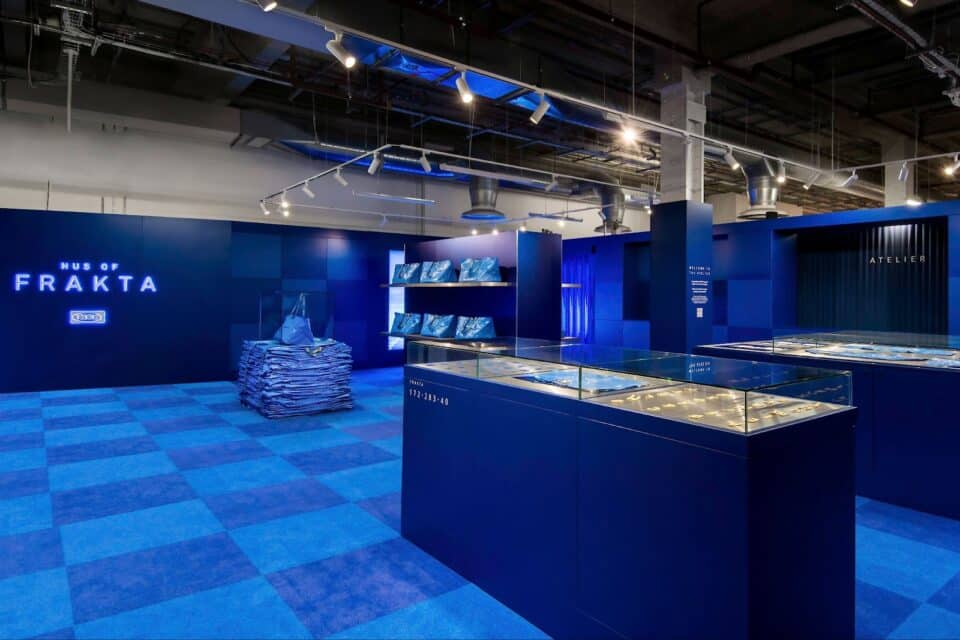
Image credit – IKEA
33. Hus of Frakta, London, UK
IKEA is usually known for its simple and affordable furniture but took a different approach with its unique pop-up to celebrate its popular FRAKTA bag.
This includes the opportunity to experience being inside a FRAKTA bag, in a blue space with ASMR bag sounds and mirrors on the walls, and free blue candy floss from a special candy floss wall.
There is also a gallery display of curated items called the Blue Edit. An Atelier is available to offer customers personalisation of their FRAKTA bag, which is offered free to members of IKEA Family.
The space is open until March 2025 ahead of the launch of IKEA’s new Oxford Street flagship.
34. AVGVST.Berlin (The Fountain), Paris, France
The Fountain was the unusual pop-up from jewellery designer Avgvst and designer Crosby Studios, situated in the Palais Royal.
The space was covered in mirrors, which were also covered in graffiti, to give it a historical and futuristic look all at once. The graffiti was inspired by that found in urban areas, caves, and the Berghain nightclub.
The Fountain itself, a modern silver display, contained the launch of the Avgvst and Crosby Studios jewellery collection. The collaboration is inspired by historical furniture and coins.
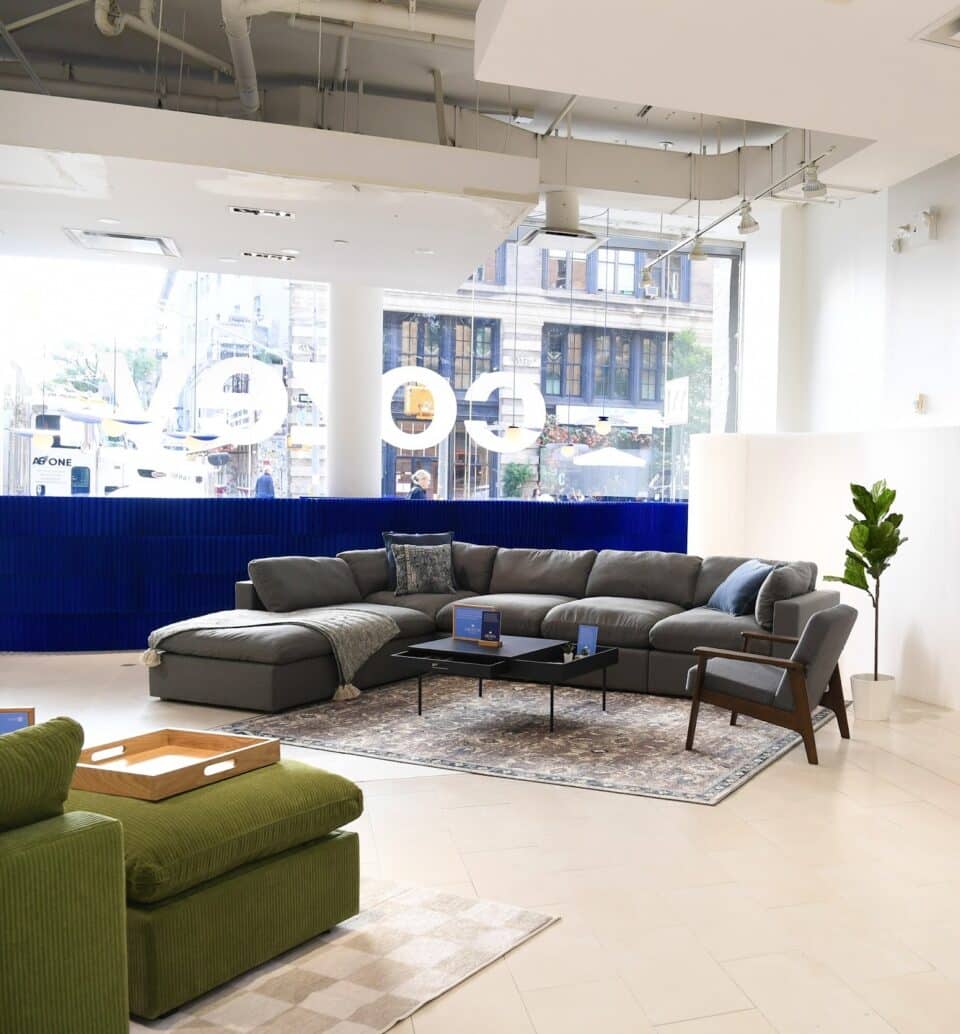
Image credit – Cozey
35. Cozey, NYC, US
Pop-up stores are not just limited to retailers selling smaller goods. Furniture brands are also using them to test new markets and locations.
Online homeware brand Cozey tested the US market with its first physical space in the form of a pop-up showroom. The pop-up displayed its range of modular furniture so that customers could see how the products work in a larger space. Accessibility was also a feature, with dogs welcome, creating a welcoming and homely feel for shoppers.
Many brands are now showcasing their suppliers and partners, and Cozey did similarly with a lighting display from Luminaire Authentik.
36. MemoParis, Seoul, South Korea
While brands do aim to try and include local elements within their stores, pop-ups allow them to be more inventive and bring a taste of other countries to new locations.
Memo Paris, a European perfume brand, brought a Parisian feel to South Korea with a hotel pop-up. It recreated the style of traditional French hotels, including a concierge desk, casino and lounge. Visitors to the pop-up were able to obtain a personalised “check-in” card which recorded the date, location and their name.
Other spaces for customers to visit included a photo booth to take and share photos online, and a variety of prizes could be won throughout the hotel. While navigating the pop-up, visitors could use the card they received on entry to collect stamps, which would allow them to visit a secret casino.
37. Snap Street, London, UK
Tech companies are partnering with retailers to create innovative new pop-ups, providing an opportunity for both to showcase their services and products.
Snapchat demonstrated its augmented reality (AR) capabilities with Snap Street, an immersive shopping experience in London, partnering with Depop, Boots and Cosmopolitan.
This included an AR lens to allow customers to pose on a Cosmopolitan front cover, a special mirror at Boots for testing out makeup using AR, and a Depop mirror to view further products. These digital experiences were paired with fun physical activities, such as a claw machine to win sustainable products, hair and makeup styling, and free items.
Luxury Retail
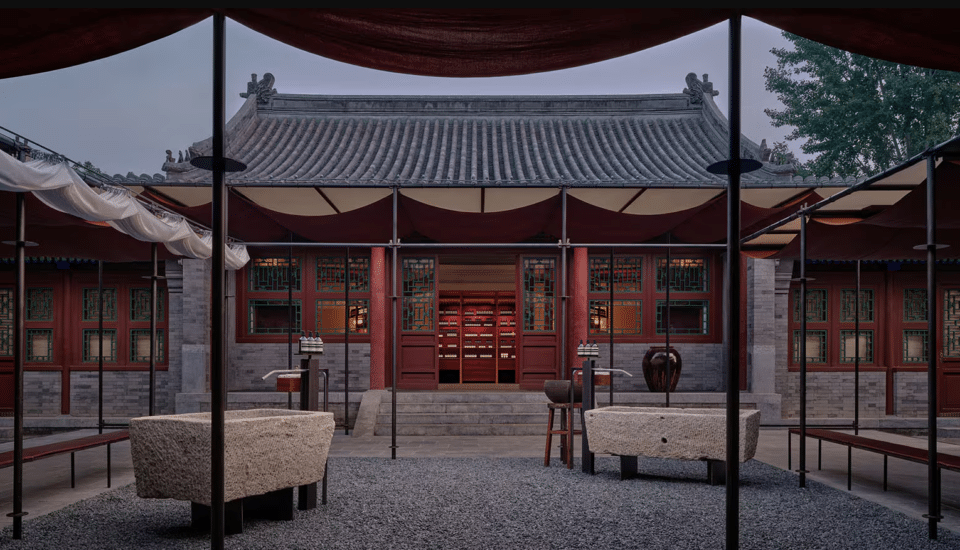
Image credit – Aesop
38. Aesop, Beijing, China
Brands have moved away from having the same store globally to having spaces that reflect local culture and history.
When cosmetics brand Aesop launched its first store in China, it used the Qing dynasty to influence the store’s design. In particular, it has replicated House 19, a building owned by a member of the Qing dynasty, with classical Ming furniture.
A relaxing and cool space is offered by the courtyard, complete with pergola, silk and canvas coverings, and a tea station. Customers can find Aesop products in traditional teak fittings within the house and hidden sinks to test the skincare ranges. There is a room dedicated to Aesop fragrances, called Eaux de Parfum, as well as spaces for beauty consultations.
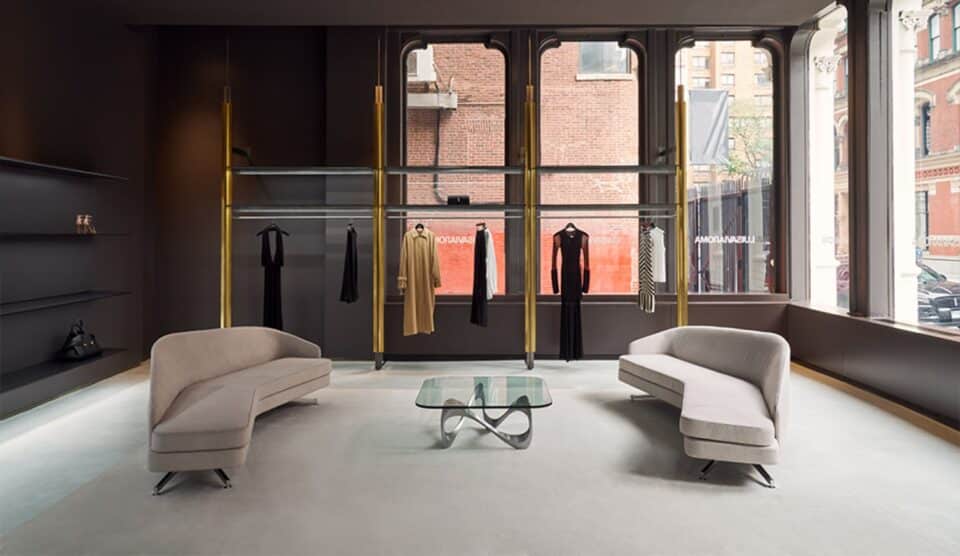
Image credit – LuisaViaRoma
39. LuisaViaRoma, NYC, US
Luxury brands are becoming more involved in reselling and providing vintage items in-store.
LuisaViaRoma, a premium Italian brand known for its high quality products, has partnered with resellers Vestiaire Collective in its New York flagship. This partnership displayed a curated collection of vintage fashion products for passing customers, but also goes further. Shoppers can bring in their own clothing and accessories to exchange them for a vintage piece, or a store voucher.
Ready-to-wear pieces from other brands are also available to buy, including Maison Margiela, Lanvin and Helmut Lang.
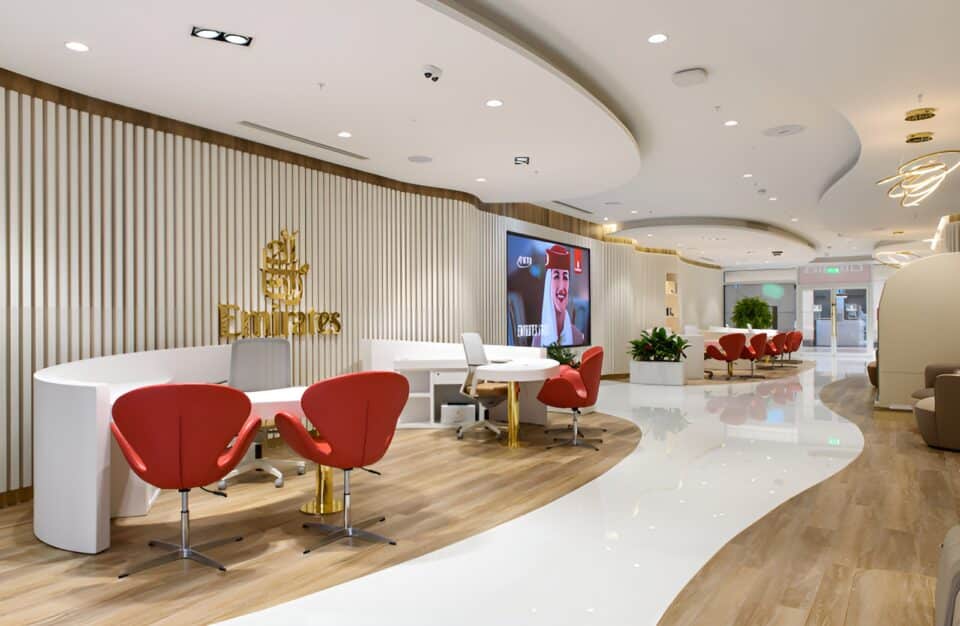
Image credit – Emirates
40. Emirates World, London, UK
Demonstrating that any brand can make a physical retail space work if it has the right concept is Emirates, the world’s largest airline.
It has created a special store that allows customers to test out some of the features available on Emirates flights, such as the A380 lounge area, premium economy seats, and First Class private suites. Additionally, visitors can take selfies and photos in an immersive area with holiday backdrops.
Once customers have been able to test the features they can also go on to purchase merchandise, such as model planes and towels, or book flights and tickets for Emirates flights.
41. Telfar, NYC, US
Fakes are unfortunately a problem in the luxury market. However, Telfar has decided to use the counterfeit market to its own advantage, locating its new physical store in an area where many counterfeit Telfar bags are sold.
This allows the brand to point out that customers can easily purchase real Telfar products, beloved by celebrities, such as the Buskwick Birkin. There is also a Chinese menu-style list of all bags Telfar has created at a special bar, and a TV studio for visitors to create content that is displayed throughout the store.
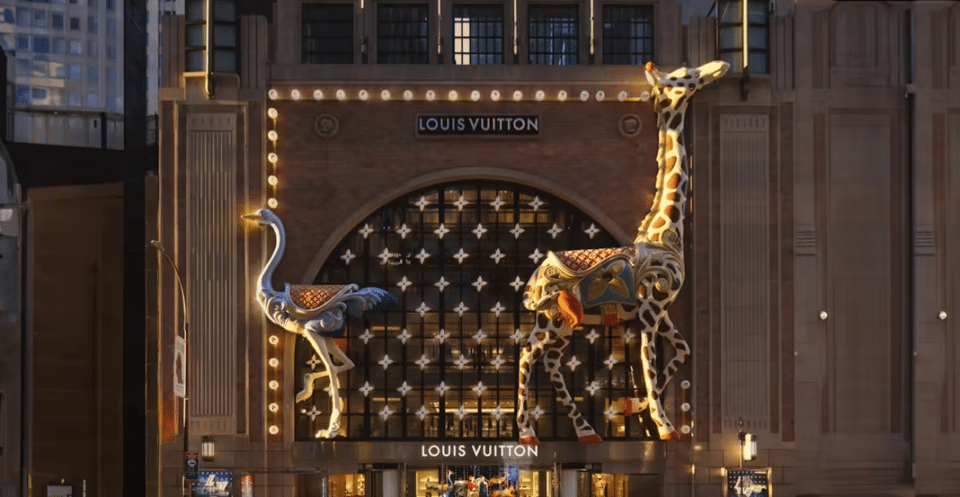
Image credit – LVMH
42. Louis Vuitton, NYC, US
Revamping stores can take a significant amount of time, especially for premium high concept brands. Louis Vuitton has found a unique way around this by launching a temporary store in an Art Deco building.
The new format allows the brand to showcase different elements of its history, such as the Courrier Lozine 90 trunks that it first created, and its history in bag making. Other touches include a retro phone booth and artwork commissioned from local artists.
Artists are also showcased in a café and library area called Le Café Louis Vuitton that contains 600 books. Additionally, Le Chocolat Maxime Frédéric has partnered with the brand to create a chocolate store.
VIP customers are able to visit the top floor, where they can privately view the brand’s fine jewellery collection and the Objets Nomades range.
Service Retail
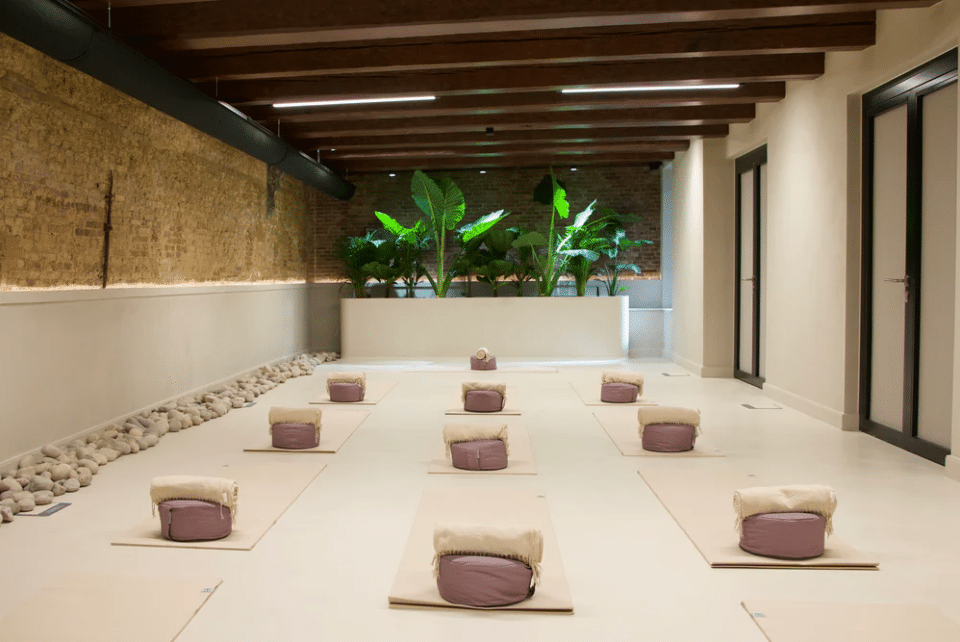
Image credit – When Nature Calls
43. When Nature Calls, Amsterdam, Netherlands
When Nature Calls is a natural wellbeing store that has launched a separate centre of wellbeing. The store is dedicated to ancient and modern biohacking and offers a series of premium services and events, demonstrating how natural remedies are becoming a luxury business.
The services available include ice bath sessions, guided by experts, and red light therapy. Red light therapy is offered either privately within a separate, relaxing room, or in the “conversation pit”, which is a space near the coffee bar, where customers can chat with others.
There are a wider range of classes that visitors can book throughout the year, including yoga and reiki, kanna and cacao supported meditations and rituals, sound baths, pilates, hypnotherapy and Ayurvedic practice. A range of health supplements that make use of fungi, adaptogens and other products are available to purchase, and the space can also be rented for events.
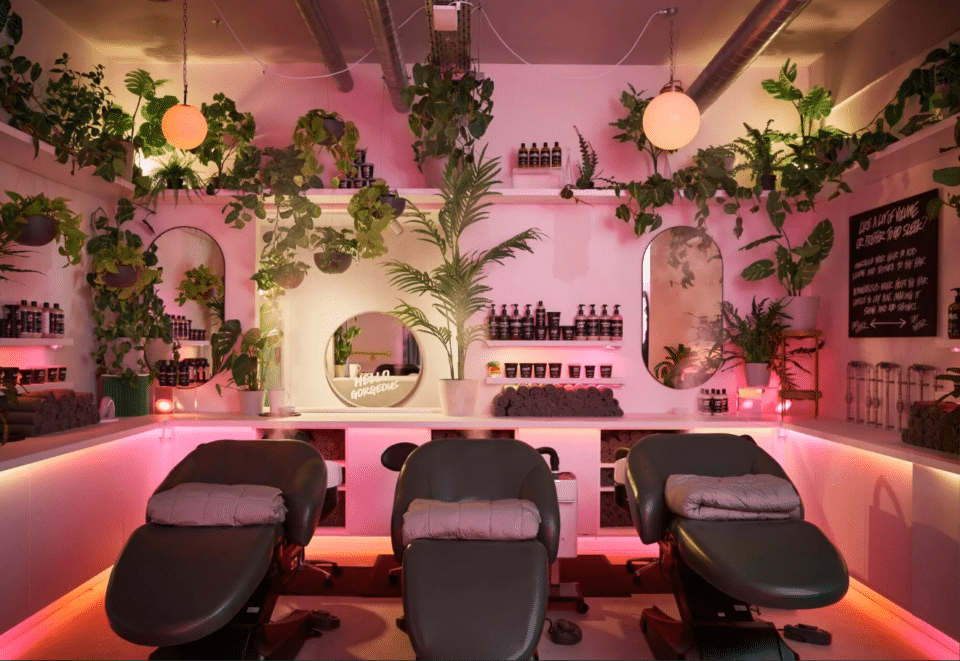
Image credit – Lush
44. Lush HairLab, Brighton, UK
Brighton saw the arrival of a new hair salon from beauty brand Lush.
The standalone space was designed to be inclusive while reducing waste. There is a botanical wash room featuring a range of light and sound, where customers can choose between hard or soft water, as well as use Lush products.
Hair stylists are trained in different hair textures and work with the customer to create their own personal look. The salon uses henna as a natural hair colouring, and offers a range of inclusive sessions, including no mirrors, silent, quiet hours, and gender-affirming events.
Foils from colouring sessions and hair cuttings are recycled to reduce the amount of waste from hair styling, in keeping with Lush’s commitment to sustainability.
45. House of A&M, London, UK
Many brands are looking at services to expand their offerings, with Astrid & Miyu, a jewellery label, creating a new concept store called House of A&M.
While customers can purchase the range of jewellery offered by the brand, the appeal is the variety of additional services on offer. This includes being able to sit at a welding station to watch a charm bracelet being created, and the A&M Café where they can drink coffee or matcha from Elsewhere Coffee and Cha Oom.
The main draw for the space are the new studio areas. These are for jewellery piercing and tattoos and are named Air, Water and Earth.
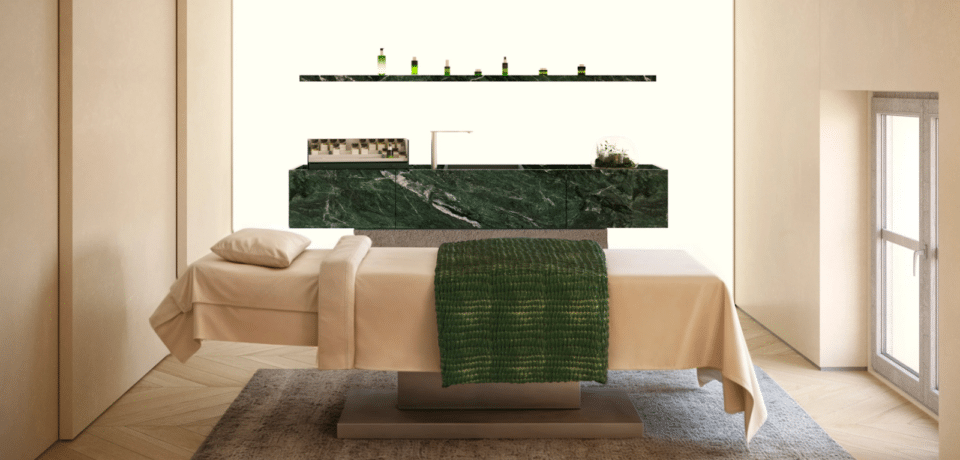
Image credit – Orveda
46. La Maison Orveda, Paris, France
Green and natural beauty is becoming more personalised and more premium, with a larger number of retailers and brands offering science-derived treatments.
Orveda, a luxury skincare brand, has launched a new spa and boutique called La Maison Orveda in France. The brand views the spa as a temple for luxury skincare, offering personalised treatment options following skin diagnosis.
Customers can use Orveda’s recommendations to test what works for their skin. There are also other treatments on hand, aiming to eliminate tiredness and blemishes from flights and other cosmetic procedures.
The space will also host events and exhibitions, particularly those dedicated to wellbeing and longevity.
Community Hub Retail
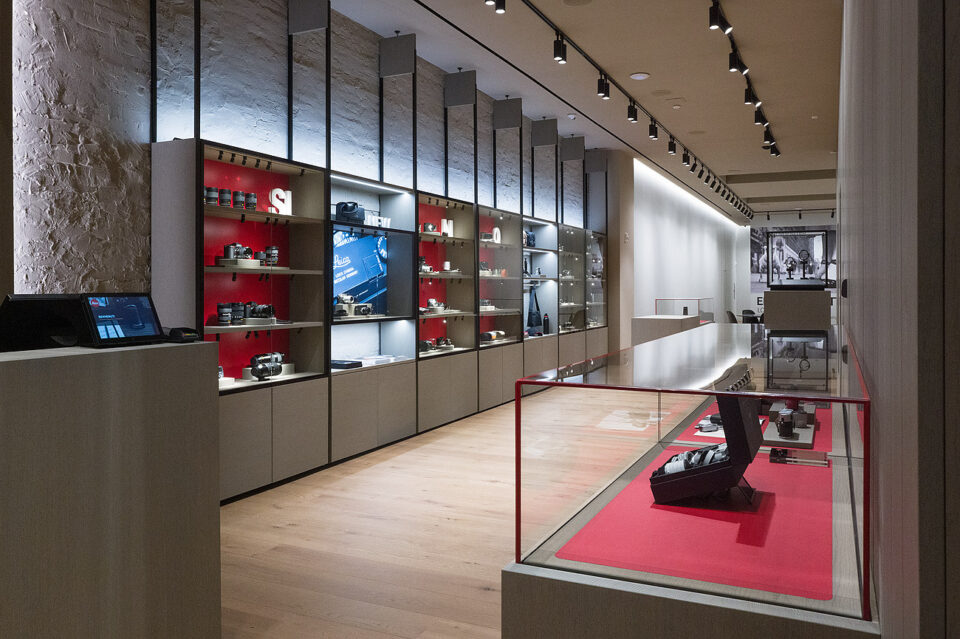
Image credit – Leica
47. Leica, NYC, US
Many brands are looking at their community, who often contain dedicated hobbyists and fans, and finding new ways to connect with them.
Leica, the camera brand, has created a space especially for New York’s photographers. The brand has included a gallery as part of the store to showcase up-and-coming and established photographers. There is also a curated selection of photographer books, chosen by photographers that visitors can browse.
Finally, there is a studio space for testing Leica’s cameras and accessories, and the new Cine 1, a laser TV.
48. KidSuper, NYC, US
To connect with the design and art community, KidSuper, a design brand, launched a creative space in New York.
The space includes studios for screen printing and photography, a library, and an art gallery. There is also a Laundromat, which is a space for creating and altering clothing. A retail space has been created to stock KidSuper fashion and products, and the brand has also brought in partners to support the whole hub, including Jägermeister and Starbucks. Future plans include a coffee shop, recording studio and football pitch.
49. Café Pli, Paris, France
Slow living and digital detoxes have been key trends over the last few years. Café Pli taps into this by celebrating the diminishing art of letter writing.
The space looks like the traditional Parisian cafes where literary types would have gathered to discuss culture, with wooden chairs and literary quotes on the walls. Customers can order a drink and pastry and then find a space to write their letter. The letter could either be to themselves in the future or to someone else.
The café has a variety of letter writing tools available, including postcards, sealing wax and stickers. The letters will be delivered in 1, 5 or 20 years’ time, and customers can also answer questions in letters left by previous visitors.
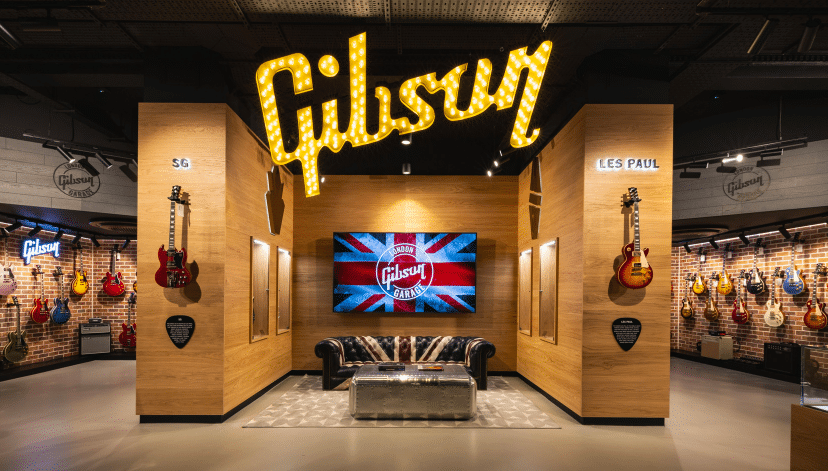
Image credit – Gibson
50. Gibson Garage, London, UK
The new Gibson Garage in London demonstrated its authenticity, passion and connection with the music community by having the store opening attended by Tony Iommi, Brian May and Jimmy Page, who cut the ribbon.
The space hosts a gallery, which showcases photography and art featuring British musicians. The exhibitions included photographer Gered Mankowitz, who has taken images of Elton John and The Rolling Stones amongst many others.
The store has a live performance space to allow a variety of musicians to perform, and a number of secret rooms that are discoverable in fun ways. A phone box has a door which leads into a VIP bar with sofas and instruments, and a movable bookcase leads to the Vault, where fans can find a rare guitar collection.
If these retail concepts have got you thinking, why not book your own personalised retail safari and see how spaces like these work in reality.

